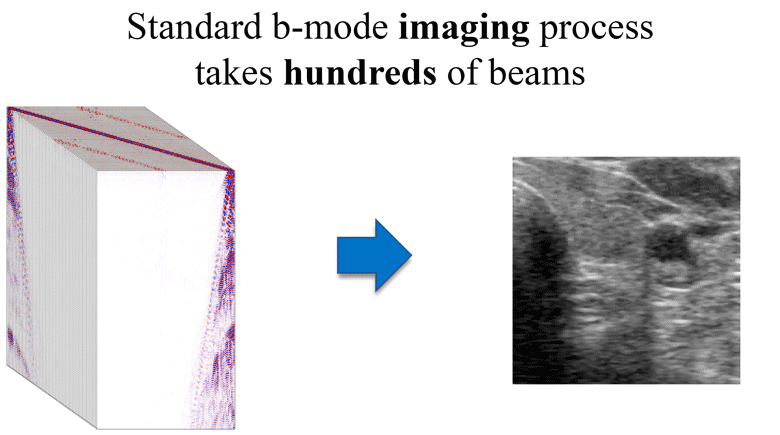
Abnormalities in the tissue’s mechanical properties and structure, as well as their spatial arrangement, are useful in disease diagnosis and monitoring of disease progression. To this end, ultrasound shear wave elastography is gaining traction as a useful diagnostic tool for such things as cancer detection and differentiation, and liver and thyroid disease diagnosis.
However, shear wave elastography is limited to high-end ultrasound hardware due to high power requirements, is extremely sensitive to patient and sonographer motion, and generally, suffers from low frame rates.
Longitudinal sound speed measurements present an alternate approach to diagnosis based on tissue elasticity. Existing data and theory show that speed of sound maps convey similarly clinically significant information regarding the physical properties of tissue.
Information regarding the acoustic and mechanical properties of tissue is embedded into the raw ultrasound signal. As part of the classical b-mode imaging process however, significant parts of this information are discarded through the application of beamforming (delay and sum focusing) and envelope detection. We tap this information by using raw channel data as input.
Classical sound speed inversion techniques such as full-waveform inversion (FWI) and travel time tomography are generally extremely computationally intensive, prohibiting real-time frame rates. They also suffer from stability limitations. This requires a good initial guess, and in cases, a man in the middle intervention.
In this work, we present a single-sided sound speed inversion solution using a fully convolutional deep neural network. We employ simulations for training, allowing the generation of limitless ground truth data. We show that it is possible to invert for longitudinal sound speed in soft tissue at interactive frame rates, using only three plane waves. The method is validated on simulated data, with highly encouraging preliminary results on real data.

